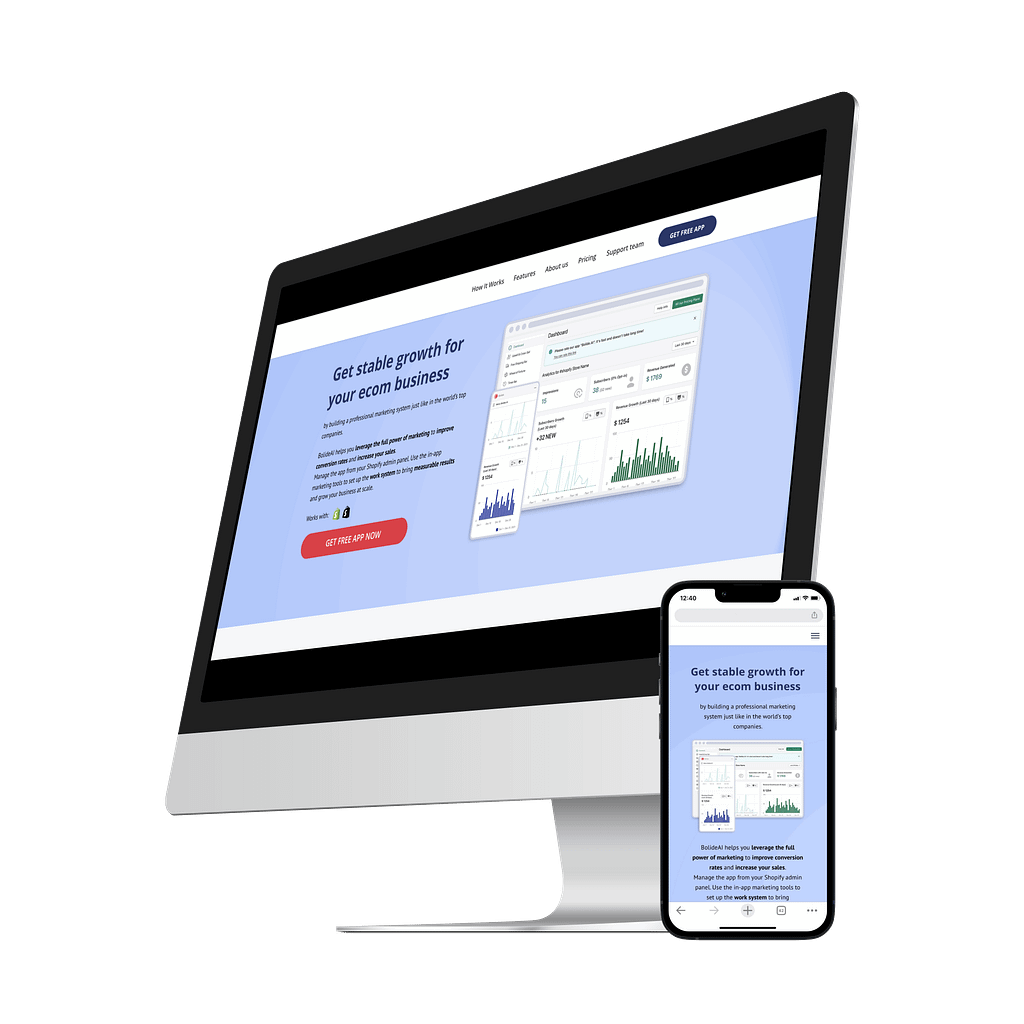Conversion app
Powered by Laravel for one
of the leading eCommerce platforms

In September 2021, a customer came to us with a request to develop a product for one of the popular eCommerce platforms. Our Add-Ons Development Department tested the customer’s hypotheses and proposed the implementation of the most promising ideas.
There were several hypotheses, testing each of which required resources. First, one developer was assigned to the project, who at that time was busy with a parser to collect marketplace data in order to find out which applications and modules online store owners use the most. This data helped to determine the choice of popular add-ons for store owners. We decided to create an application to increase the conversion of an online store.
Challenge
Develop a conversion application with product recommendation blocks
Implementing the project
Here we will tell you how we created the project from scratch.
Choice of the app features
The Simtech Group of companies includes a company that develops an application with a smart search on the site. The application has built-in upsell- and cross-sell-blocks of product recommendations (“Buy together”, “You may also like this”, etc.). We used the experience of the company in the new development and brought these blocks to a separate application.
Two more developers joined the team. Thus, three developers, one product manager and one analyst were involved in the project. Evaluation and decomposition of tasks took a month. The team collected the most valuable features on the marketplace that could be repeated in the new add-on. We prioritized them and received an additional set of functionality for the future application. The module was supposed to be not just another application for increasing conversion, but a piece of software incorporating all the best that can be offered for the store owners.
The development was based on the concept of the marketer Ryan Deiss. His theory deals with automating the sales funnel. The concept says that any relationship, be it working or personal, goes through certain stages: getting to know each other, the first date, meeting the parents, etc. It’s the same with business. Ryan shares a funnel consisting of the following stages:
We shortened it a bit and determined which applications for which stages we will make. As a result, the product took the form of several blocks:
- Product recommendations (Similar products, Most popular, Products by tag, Featured products, etc.)
- Email collection bar to add a line to subscribe to company news and collect email addresses
- Free Shipping (with 2 progressive goals: “Add N amount of items to the cart and get free shipping, “Buy for N dollars more and get a bonus”)
- Announcement bar to inform about special offers
- Countdown timer, (“Promotion ends in…”)
Part of the functionality had to be abandoned. MVP originally included the Wheel of Fortune app. During the development process, we conducted several interviews and decided that the feature would not be of value to potential customers.
When studying the product potential we also revealed a segment of potential customers whose technical requirements were completely different. This greatly complicated the interface. We had to design two interface options for different customer segments. For the new segment, we introduced a different business logic and new algorithms.
After multiple MVP revisions and adjustments, we finally released the conversion app. Thanks to the app’s thoughtful architecture and the developers’ skills, the testing stage lasted only a month, instead of the planned two.
Project team
Apart from the initial team composition, the project now involves a DevOps specialist, two marketers, an UX/UI designer, a support specialist, a tester, a custom care specialist and a copywriter. All specialists joined the project at different development stages to avoid additional costs.
Conversion app structure
We used Laravel for the backend, and React and JS for the frontend purposes. Also, Redis, RabbitMQ, Mysql, and Typescript were applied during development. The infrastructure is based on Kubernetes. A Rabbit MQ-based microservice was implemented. This queue manager allows the app to operate smoothly under high loads keeping the task assignment up and running. In a test format, we connected the ClickHouse database to track client behavior (we don’t use it now). We tried the machine learning functionality for smart recommendations based on client behavior (we refused it due to high cost). Our dedicated team set up customer tracking through Amplitude, an analytics service. For product management, a customer report was compiled: which pages customers visit, what they set up, how often they return. This made it possible to better assemble the app.
Best practices
Data storage complies with GDPR and US law. We introduced the CI/CD processes in the app development. Github allows version control.
We are proud of this project, because here we accumulated the experience of the Simtech group of companies, analytically approached the choice of features for the future app, assembled a team for the project and implemented the best practices for designing and developing using the latest technologies.
Results
App has been developed for just 12 months with a project team of 10 people. It is fully compliant with the US and EU regulations. After 3 months on the market, the app accounts 1,000 active users and scores 4.3 stars in the App Store. It’s an amazing result for a 6-month old app.

